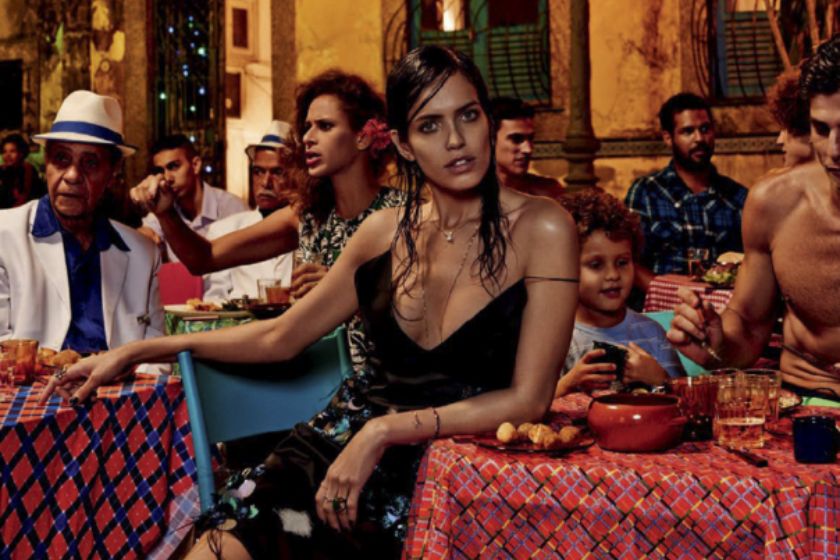Head to the end of the world for a three-week family trip that will fill your memory box for a long time? Come on, ignore the constraints of slightly long flights, time differences, and vaccinations. Shoelifer has found the ideal destination for your tribe and even prepared an itinerary for you!
The year-end holidays are approaching. You’re looking for a family travel plan that goes off the beaten path, not too complicated to implement, with pleasant weather. And, of course, safe, both health-wise and politically, in these complicated times. We’ve done our research, and we suggest heading to Latin America.
Imagine walking in the footsteps of Che, discovering Pachamama, and ascending to Machu Picchu… a mix & match of cultural discoveries, ancient civilizations, and natural treasures that can easily be done with the family. Ideally you’d bring children over the age of five or six so that they can form memories of the experience, but according to the general opinion of travelers, it’s a trip that can be done at any age, provided you know how to be patient and inventive during travel times.
Over 9000 km and a four-hour time difference separate Morocco from Argentina. There are no direct flights, and that’s a good thing. Layovers allow your family to stretch their legs and get some fresh air before reaching the destination. Ideally, this trip would require at least a month on-site. Still, time is often limited, so we tried to condense everything into three weeks.
At the end of the world with a tango vibe
First, we land in Buenos Aires, a sprawling city with a decidedly sexy aura. The cultural and artistic buzz is remarkable. The idea is to stay in its heart to easily move around and access the main points of interest. San Telmo, La Boca, or Recoleta are the neighborhoods to prioritize. Here, day and night, the rhythm follows the steps of the tango. The city’s steakhouses serve excellent beef, and young chefs compete in inventiveness. Just to name a few, we recommend lunch or dinner at Don Julio, Anchoita, and Aramburu.
The architectural landscape in Buenos Aires is eclectic. Between Art Deco, neoclassicism, and colonialism, the styles and influences evoke the country’s history. A detour through Plaza de Mayo, Teatro Colon, and Casa Rosada will give you an overview of what the most European city in Latin America has to offer.
Argentina is the heartland of tango and football, but it’s also the Andes and Patagonia. Just the mention of these two words puts us in the shoes of explorers. It’s challenging to determine a typical route, but it seems obvious that you should go to the end of the world, to Ushuaia. The southernmost city on the planet, the last port before Antarctica, is also the capital of Tierra del Fuego. Be sure you wear warm clothes; it doesn’t get warmer than 3°C, but the landscapes are beautiful, and you’ll have the chance to see penguin colonies!
Also, one of the most impressive natural sites in the world is in Argentina, exactly on the border with Brazil: the famous Iguazu Falls. UNESCO World Heritage, these 275 waterfalls wind through the tropical forest before reaching over 80-meter-high basalt cliffs — dizzying fall with a breathtaking roar. This is a memory that promises to remain engraved in the memory of this family trip. The falls can be visited from 8 am to 6 pm, but plan to go in the morning if you want to make the most of it.
Practical information:
Buenos Aires GMT -3, vaccination schedule to be checked on the Pasteur Medical Center website and updated at least 15 days before departure.
Currency: Argentine Peso. Budget between 15 and 20 euros/day/person for dining and around twenty euros for paid activities.
Where to stay in Buenos Aires? Four Seasons or The Family Coppola Hideaway
Colors and poetry in Chile
Our journey continues, bringing us to Chile. A wild and natural land where the love poems of Pablo Neruda, the famous Chilean poet and Nobel Prize winner in Literature, take on their full meaning. Start with Santiago, the capital. Cultural and intellectual life thrives at every street corner: literary cafes, street art, art galleries, designer shops, etc. The picturesque architecture of the city combines colorful houses typical of South America and buildings with contemporary designs. The city is located in a valley surrounded by the snow-capped peaks of the Andes.
Remember some mythical neighborhoods to visit: Bellas Artes, Bellavista, Cerro Santa Lucia, and Cerro San Cristobal, which is a bit like the city’s lung. Everywhere, you can discover Chilean gastronomy. You’ll discover the flavors of pastels de choclo (corn cakes) and ceviche. La Sarita Colonia, Azotea Matilde, or Peumayen are noteworthy dining options.
Don’t skip the famous Easter Island, lost in the middle of the Pacific. Obviously, the Moai, these large statues whose history remains mysterious, will be a significant step in your family trip. The village of Hanga Roa, volcanoes, and sandy beaches lined with coconut trees will allow you to get up close to a culture that is still beautifully preserved.
Chile also boasts the highest geyser field in the world. Perched at 4300 meters, El Tatio’s geysers growl, gurgle, whistle, and spout with incredible power. To fully experience this, it’s better to plan to explore El Tatio Park on foot at dawn, which is entirely feasible with the family.
The Los Lagos region is also a must-see in Chile, a range of blues and greens that stretch as far as the eye can see. Wild horses, llamas, alpacas, and other vicunas live peacefully under the smoking eye of the Osorno Volcano. We are in Patagonia. A visit to Chiloe Island and a kayak ride will allow you to see some of the sixteen colorful wooden churches, listed on a Unesco list. Then, we’ll take a final stop to observe the stars from the Atacama Desert: a nearly lunar landscape in one of the driest regions in the world.
Practical information:
Santiago, Chile, GMT -4, vaccination schedule to be checked on the Pasteur Medical Center website and updated at least 15 days before departure.
Currency: Chilean Peso CLP. Budget between 15 and 20 euros/day/person for dining and around twenty euros for paid activities.
Where to stay in Santiago, Chile? Mandarin Oriental or Hotel Bidasoa.
In Peru, following the Incas
Peru is the Latin American country that holds the most cultural treasures. From Lima to Cusco through Arequipa, the white city, you will be constantly impressed by the close connection between the glorious past of the Inca civilization and the modernity of current life. The architecture of the country’s main cities also highlights this subtle blend of authenticity and innovation. Between markets, museums, squares, and basilicas, you’ll have plenty of choices for sightseeing.
For your taste buds, Lima has some surprises. The city indeed has 4 of the best restaurants in the world, according to the British magazine, Restaurant, in 2023. The best of them, Central, but also Kjolle and Astrid y Gaston are must-visit locations.
But Peru is primarily famous for Machu Picchu. This “Lost City” of the Incas was built on the mountainside of the Andes. A UNESCO World Heritage Site, these emerald green terraces have withstood numerous earthquakes and invasions. The site must be on your to-do list for this family trip. Plan to get there early; access starts at 6 am, and the last entries are at 2 pm because Machu Picchu closes at 5 pm. The visit takes about 2.5 hours.
On the road to Cusco, a stop is essential in the heart of the Sacred Valley of the Incas. This valley stretches over about sixty kilometers, bordered by mountains and crossed by the Urubamba River. Archaeological sites and craft markets will delight both young and old.
Shared with Bolivia, Lake Titicaca is a sacred place that the Incas consider the cradle of their civilization. At about 3800 meters above sea level, it is one of the highest navigable lakes in the world. Dotted with artificial floating islands made of woven reeds, you can even plan to spend a night with a Peruvian family there.
If you have time, don’t miss the famous Nazca Lines in southern Peru. This geoglyphs site and as-yet-unexplained mystery consists of over 800 geometric figures representing animals and believed to have been created in the year 500 BC. The village of Huacachina, a mirage in the heart of the Peruvian desert, the Paracas Nature Reserve, or the Colca Canyon are also wonders to include in your itinerary.
Practical information:
Lima, Peru, GMT -5, vaccination schedule to be checked on the Pasteur Medical Center website and updated at least 15 days before departure.
Currency: Peruvian Sol. Budget between 15 and 30 euros/day/person for dining and between 10 and 15 euros for paid activities.
Where to stay in Lima? Belmond Hotel or Atemporal.
Picture (c) : Vogue


